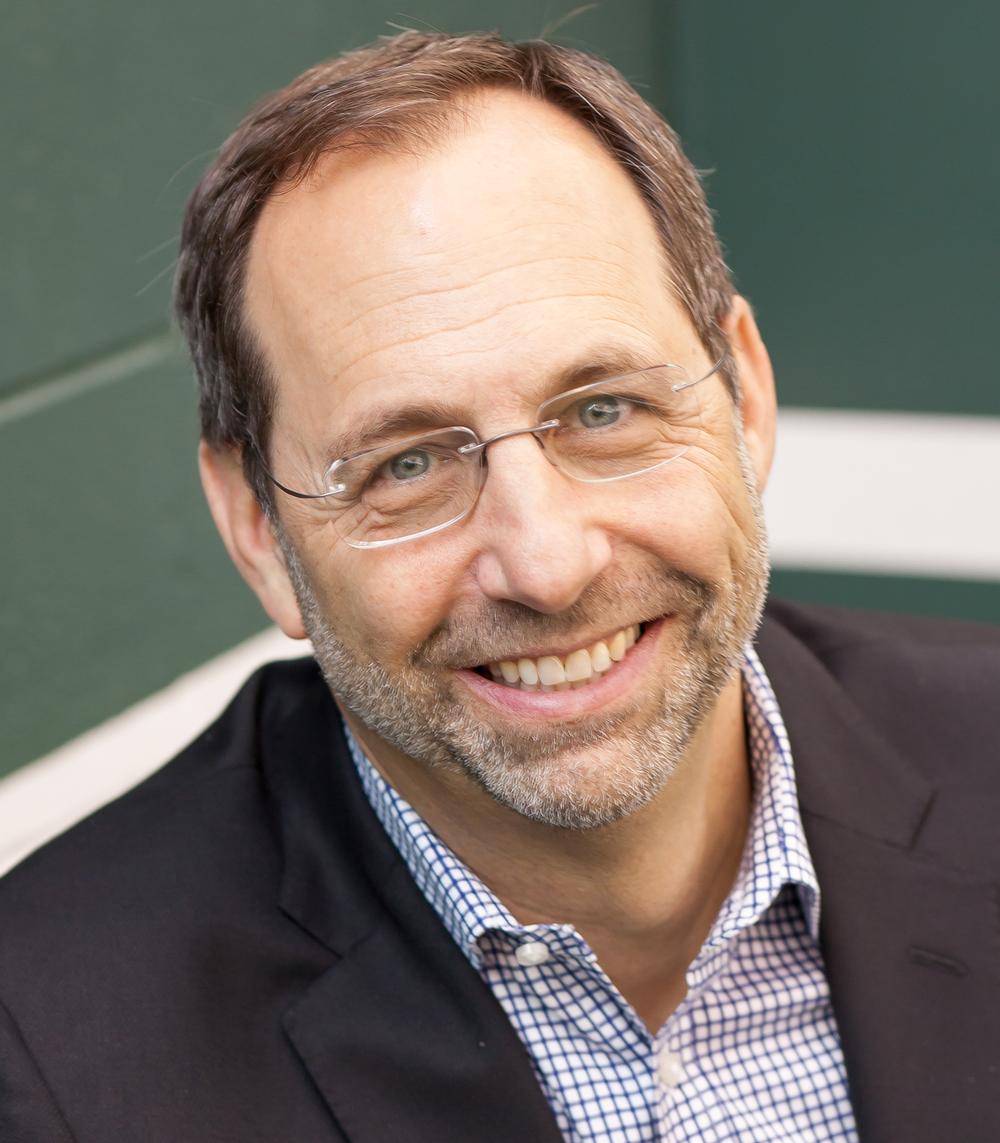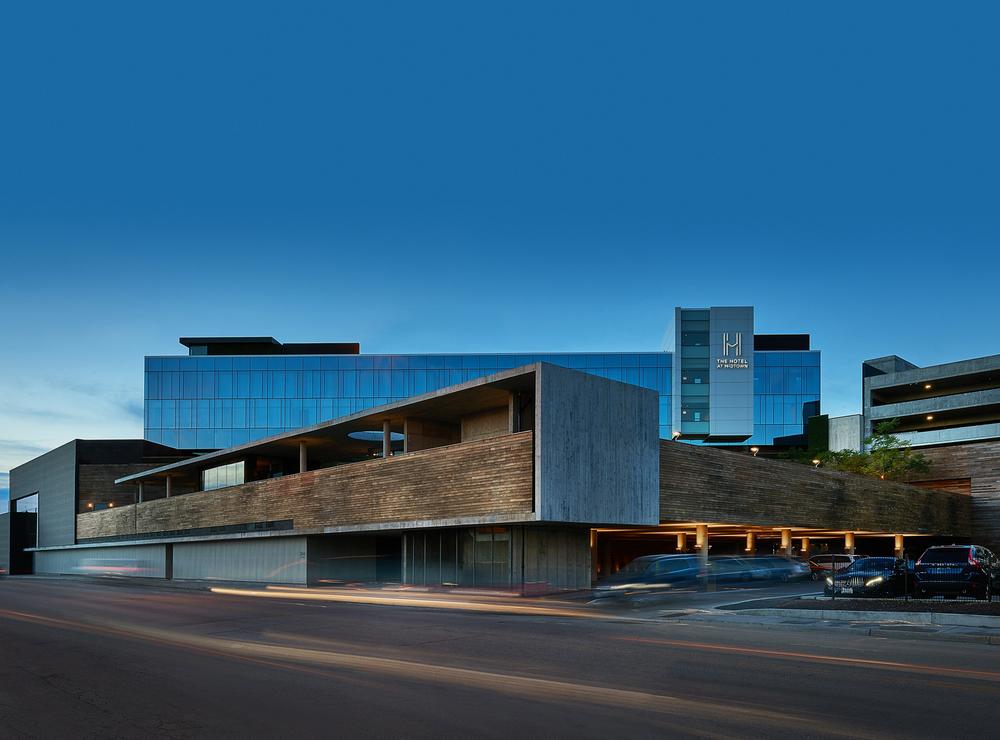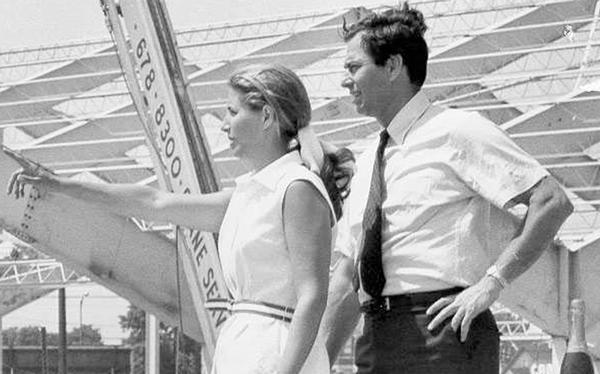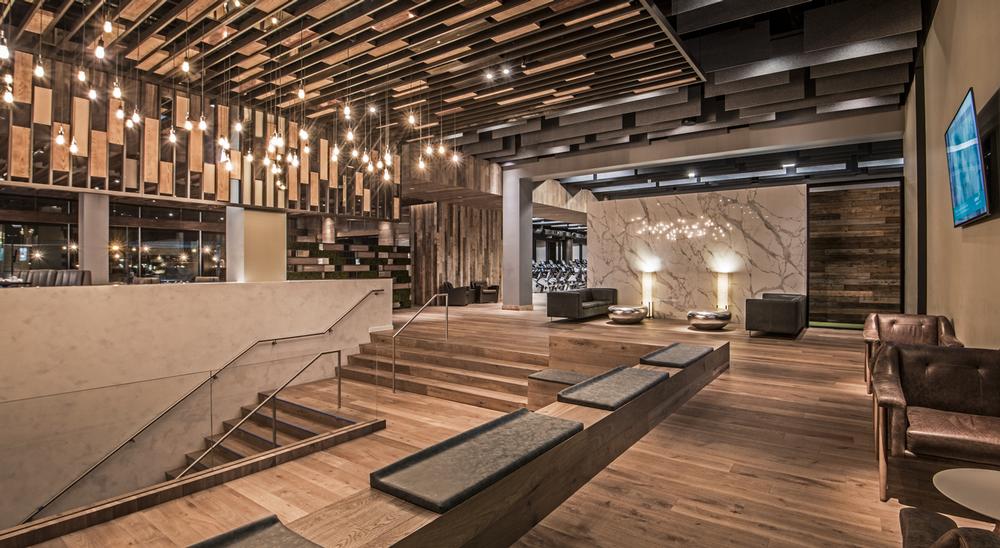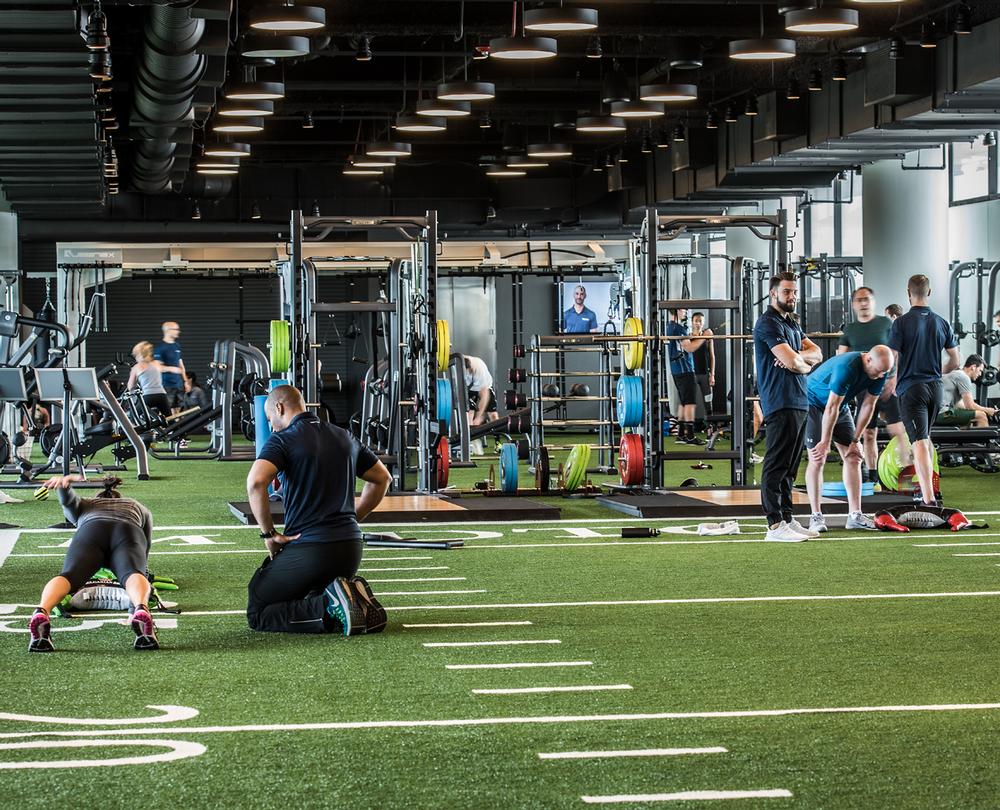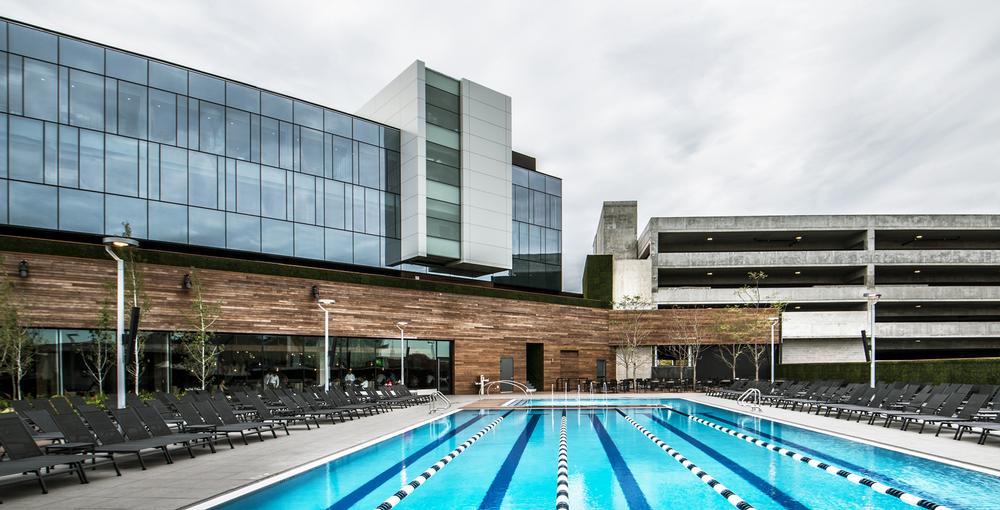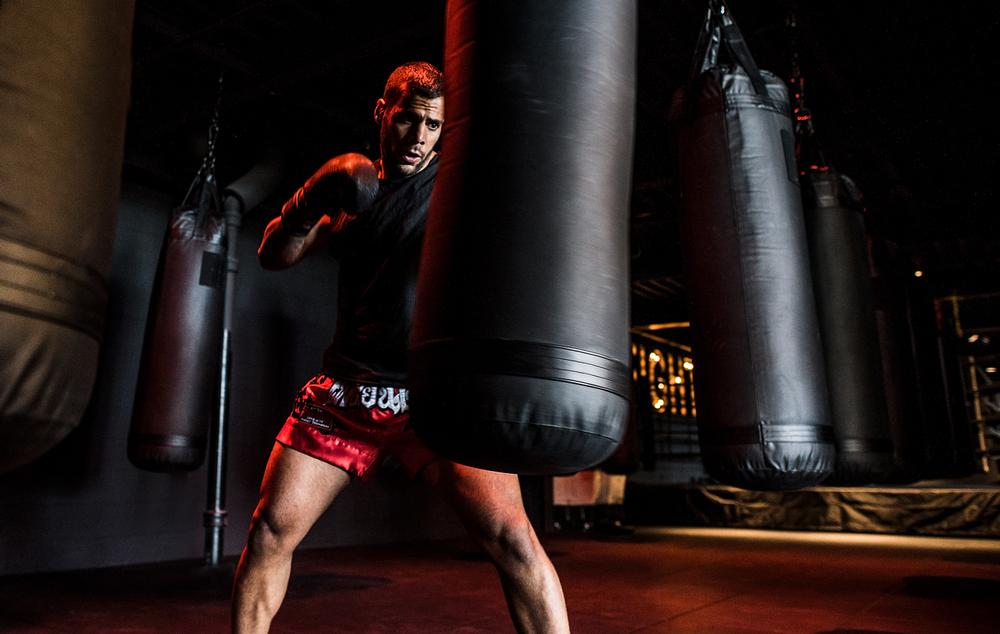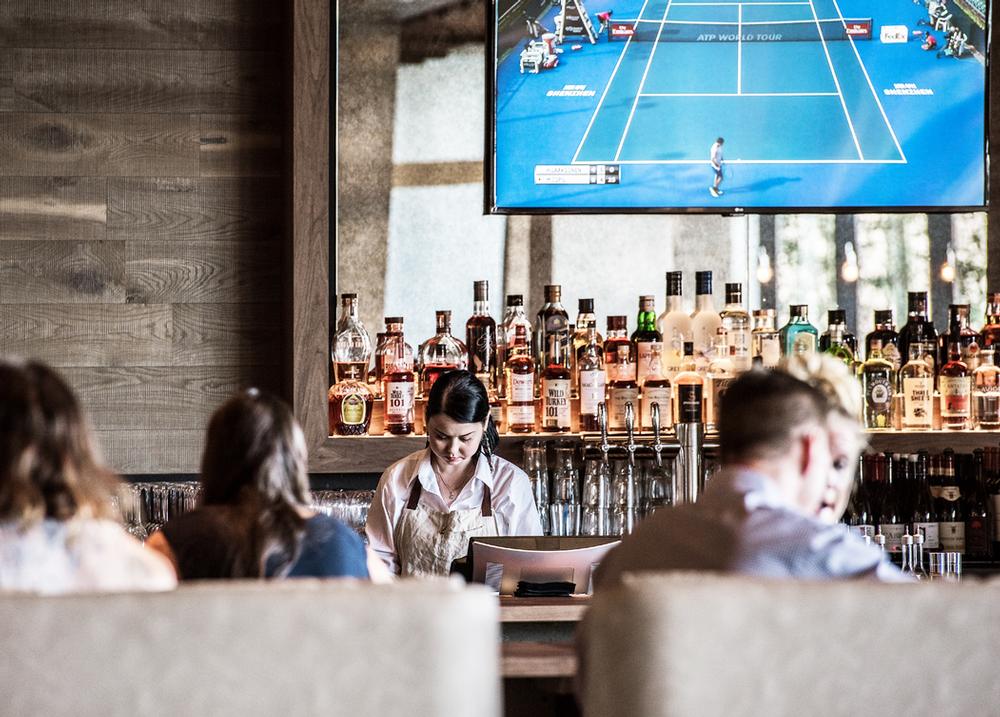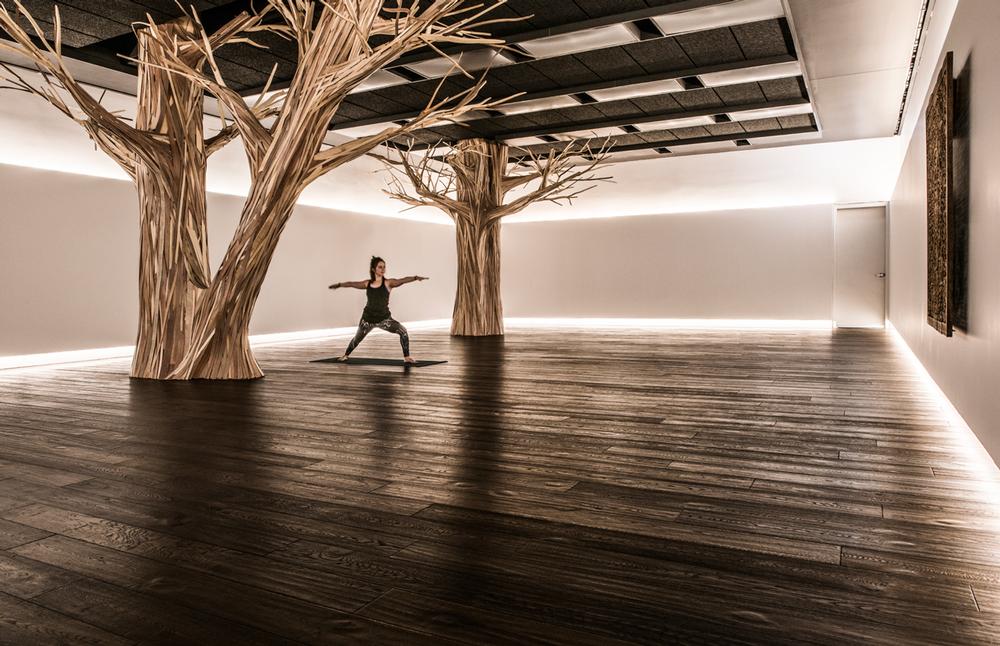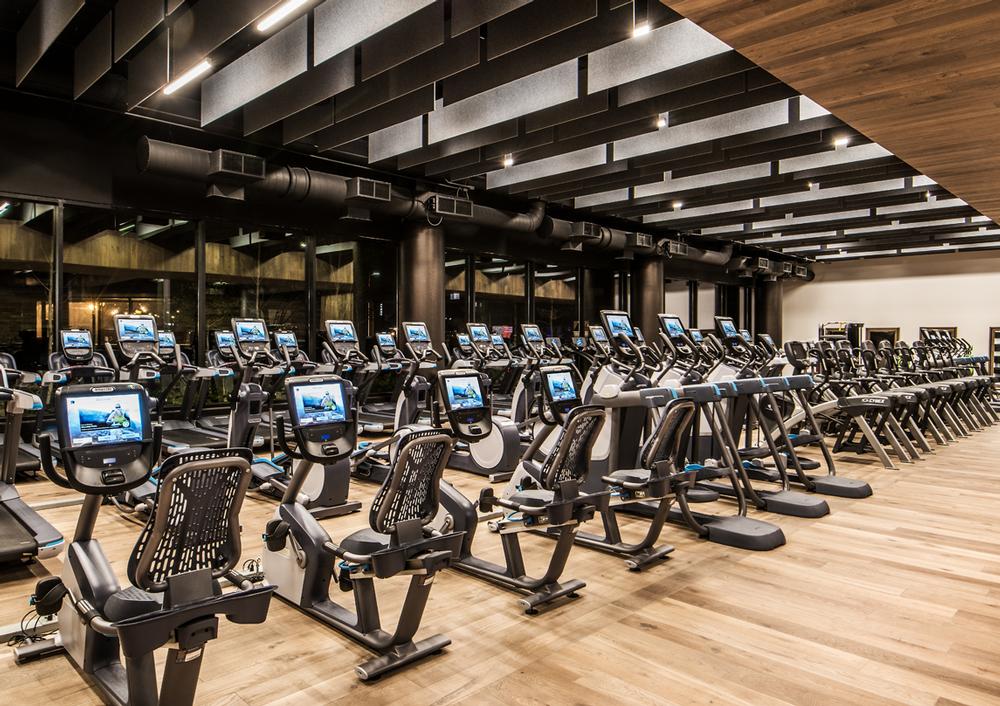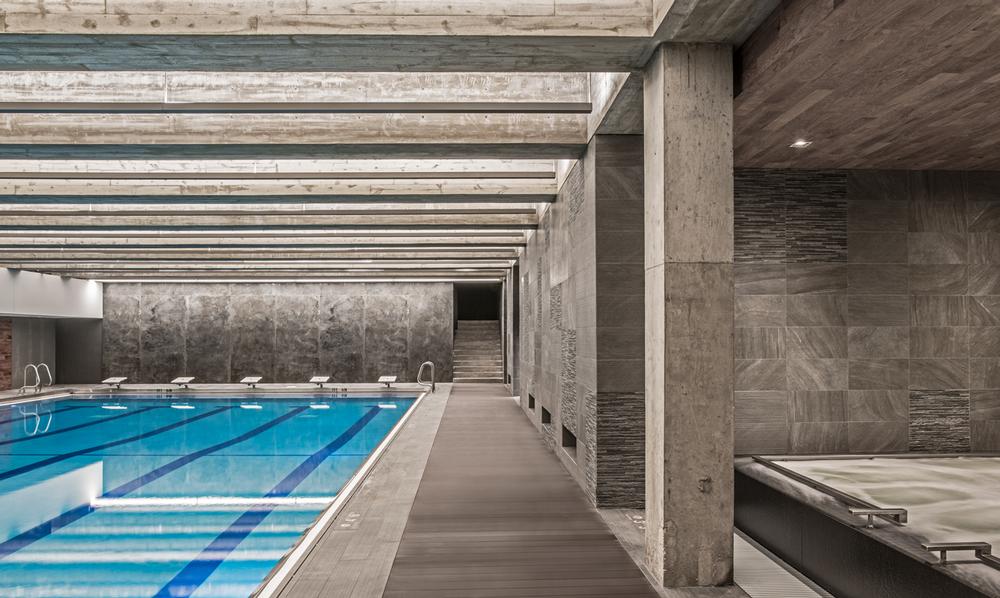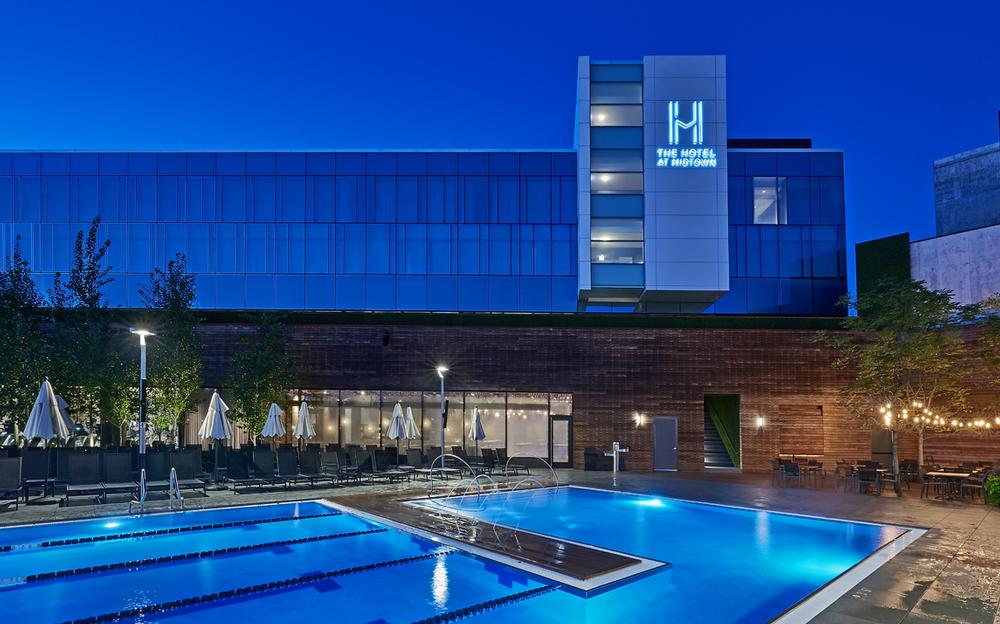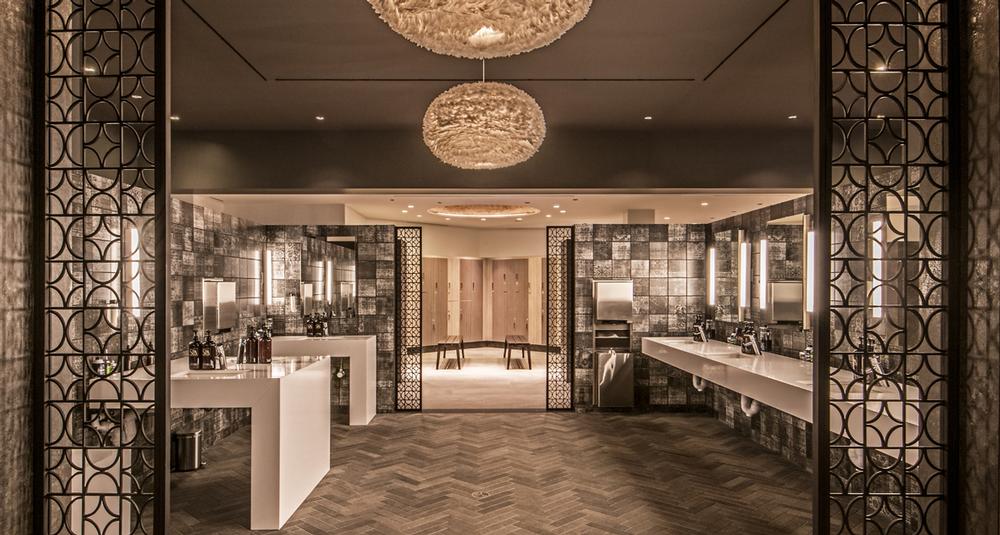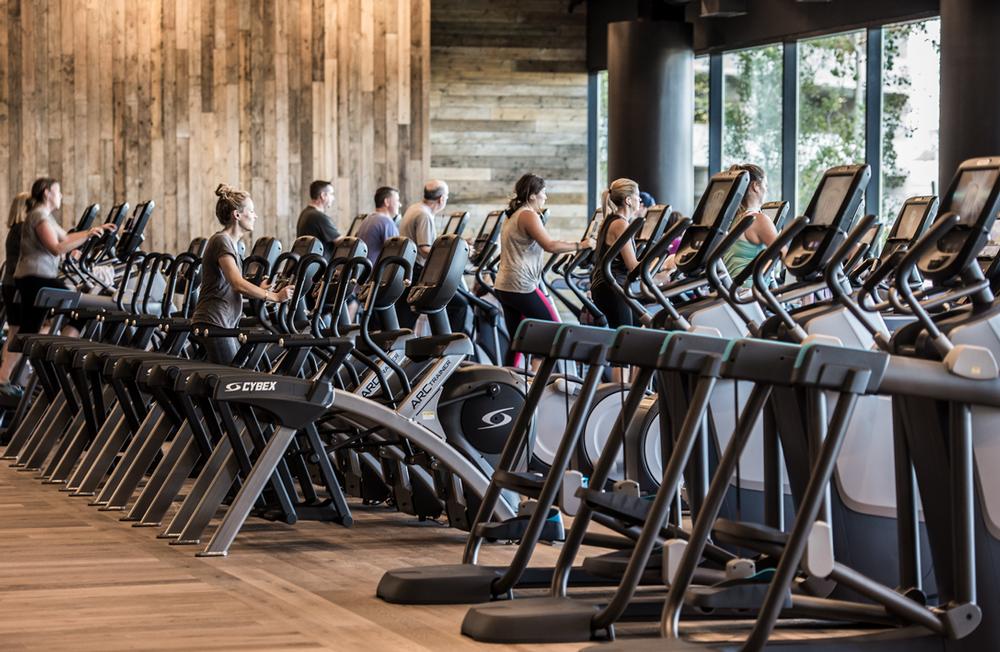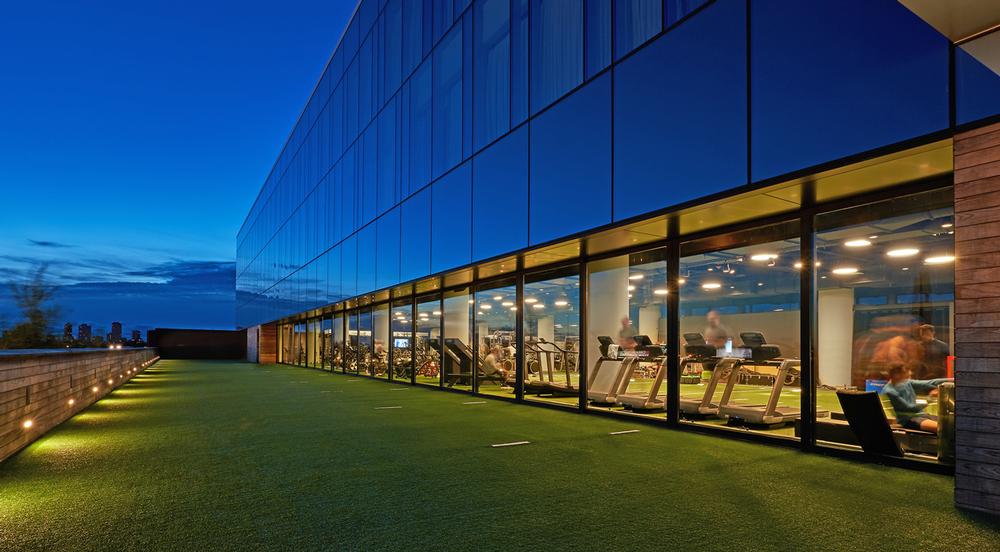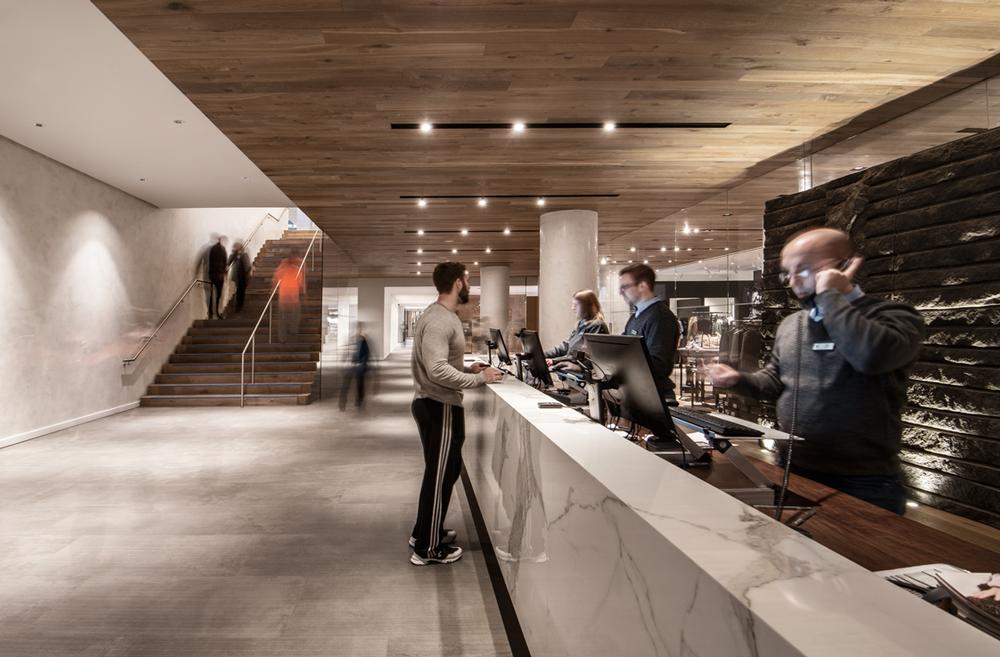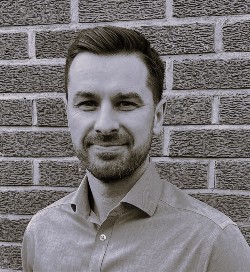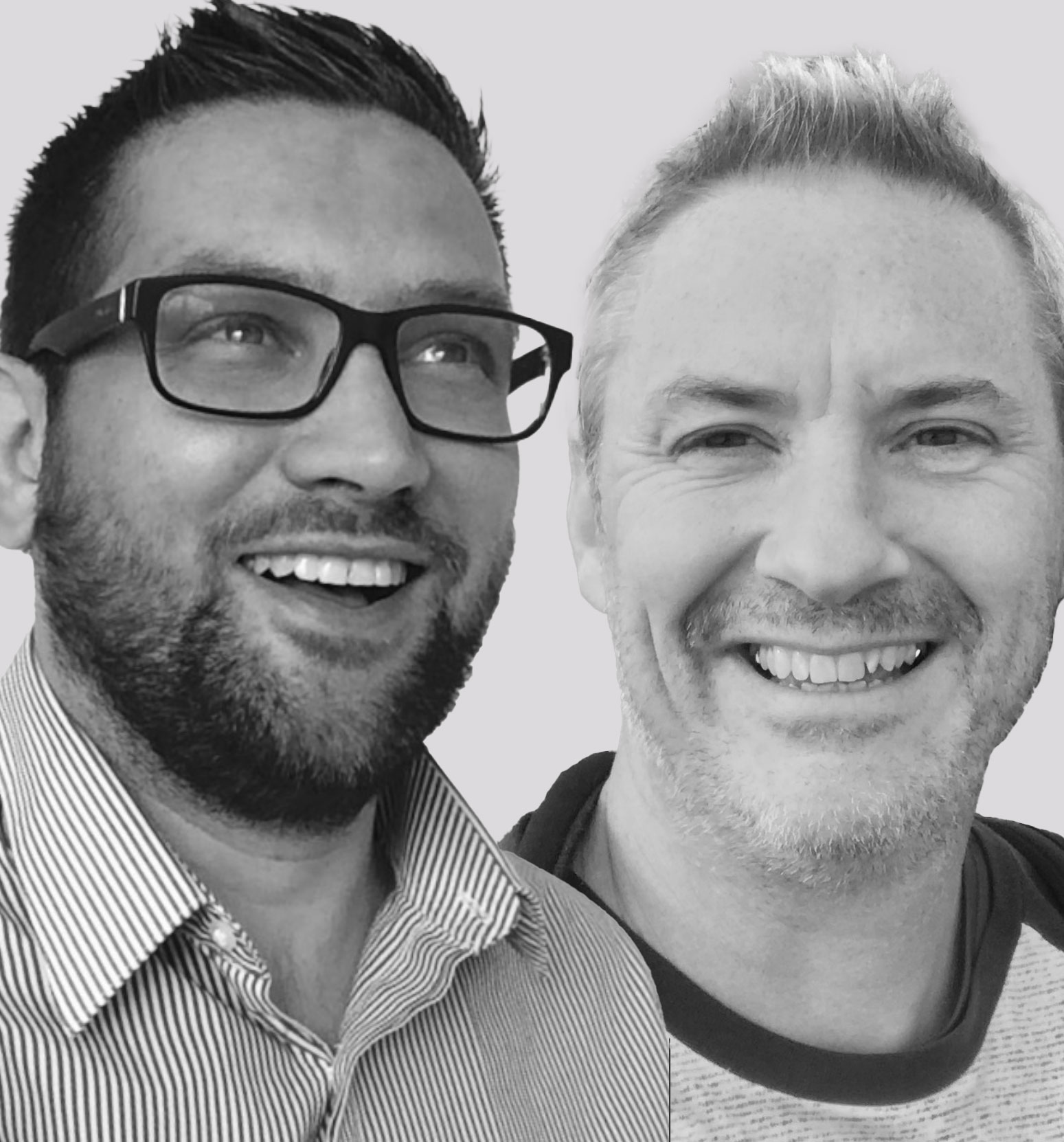Originally founded by his father and grandfather in 1970, and with his son Alex now making his presence felt as director of marketing, Midtown Athletic Clubs is – as CEO Steven Schwartz explains – a four-generation business.
“Dad was a great tennis player: winner of nine national championships and seven state championships. We never had a vacation that didn’t revolve around a tennis tournament,” Schwartz laughs. “He was also passionate about real estate, and what the business did was bring this together with tennis. The clubs were tennis facilities and my dad would get involved in the tennis programming, but the business model had a real estate focus and we always had partners in the clubs.
“In my father’s mind, I think it was an inevitability that his kids would join the family business,” he says, “but I went down the path of hospitality, studying at Cornell hotel school. My dad’s fire was stoked when my career brought me back to Chicago as director of development for Hyatt Hotels. I got leaned on and I fell for it!
“I joined Midtown in 1987 and started looking at the model. The business certainly wasn’t failing, but tennis wasn’t performing as I thought it could. We started adding elements of fitness, turning Midtown into a multi-recreational business, and learned how to market it. We soon realised this was a more profitable model.
“Dad wasn’t really interested in fitness though, so by 1990 he turned to me and said: ‘You do it!’ We renovated, repositioned and slowly, over a period of about 15 years, bought out all our partners to consolidate ownership.
“We now own eight Midtown Athletic Clubs outright, including ownership of the property itself: four in Chicago and four up and down the eastern seaboard, including one in Canada. We also manage 25 clubs for other owners – hospitals, corporations and so on – which is an area of the business dad started and I’ve grown.
“Management contracts are a comparatively small part of our cashflow though. Our eight owned clubs are all very large: US$8m in revenue a year for our smallest club; US$13m for our average club; and over US$40m a year at Midtown Athletic Club Chicago – dad’s original tennis club.
“At least, those were the revenues pre-COVID...”
What sets Midtown apart?
“What really separates us is our focus on environments, experiences, feelings. This is how we differentiate ourselves from others, and it comes from my background in high-end experiences at hotels and resorts. It’s about lifestyle – creating spaces that make you feel uplifted and where you want to hang out.
“I’m into art and design and have been a photography collector all my adult life. I’m fascinated by how the aesthetic world – the abstract use of composition, tone, depth of meaning – translates into everyday life, even without us always knowing it. Fuelled by this interest, our design philosophy includes a number of interesting principles.
“‘Space is Luxury’ is one such principle. Space is inefficient. It goes against everything you usually try and do when you design a gym, fitting in as much equipment as possible. By contrast, we’ve created boulevards on the gym floor where two, three, even four people can pass each other comfortably. We don’t even have stairs at both ends of the floors – just at one end – so people have to engage in a stroll, which is a wonderful feeling.
“This dovetails in with a concept we call Alone Together, which is about being around others even if you aren’t directly interacting with them. It recognises that fitness is often a solitary pursuit, but that people still want the social connection of being around others in a space they enjoy spending time in.
“Another design principle is Natural Materials: there’s a real resonance at an emotional level when you see something that’s real.
“Light is another. We have big windows in our ‘do it yourself’ fitness areas, and in our social spaces where possible, to offer uplifting views. The studios are the complete opposite: these are controlled environments where we create an experience, and each experience is dictated by the class that takes place there. I want these rooms to be angular so they lean in to what they are. A lot of other studios already do that well, but I wanted to lean into that, bringing it into our big clubs to create a series of boutique spaces.
“We have entrance areas before the studios, too: it isn’t just a case of walk up, open the door, walk in. As you approach each studio, there’s an area of transition, setting the tone as you move from one space into another and recalibrating your senses. I call it Layers of Wow, where you peel back one layer at a time. In our Chicago club, for example, as you approach our yoga studio Samadhi, you enter a quiet, moodily-lit ante room with a huge Buddha statue. That sets the tone. Then you go into the studio itself and you see a tree in the middle – another ‘wow’.
“Overall, it’s about creating something a little less efficient, a little more fun. Somewhere you can lose yourself for a couple of hours... hence my dislike of signs and clocks!
What was your rationale for building a hotel at the Chicago club?
“The business is now 50 years old, so we’ve had to reinvent ourselves a few times: first adding fitness, then big outdoor pools and recreation areas and now, at Midtown Athletic Club Chicago, a hotel and farm-to-table restaurant. We still have 16 indoor tennis courts at the club – something we did backflips to save – but essentially we’ve dismantled the whole club and rebuilt it. You gotta love my father for letting me do this!
“The reconstruction project was actually already underway when we came up with the hotel idea. A friend of mine was, at the time, CEO of Wilson Sporting Goods and was considering moving its HQ alongside our Midtown club. We were discussing an integrated concept, with Wilson potentially taking over one of our tennis courts for its Innovation Lab and our members being able to train there, so Wilson could observe real customers using its products.
“And then he pointed out that there was no hotel in the area. With my background, what was I thinking? Ours was an unbelievable hotel location, directly on the expressway between downtown – with its 40,000 hotel rooms – and the airport with its 18,000 rooms. We had free parking, great facilities on-site, we were adjacent to some of the great neighbourhoods if you wanted to go out. And no other hotels nearby.
“I immediately realised I needed to do it. That said, I was too chicken to build a really big one, so decided to build a boutique hotel that was big enough to be a ‘real’ hotel, but small enough that we didn’t have to go after corporate events to fill it.”
Is this now the blueprint for all Midtown Athletic Clubs?
“Hotels won’t work at all our locations –they’ll work incredibly well at some and not at others – but overall, what we’ve created at Midtown Chicago – that secret sauce which brings together angular boutique studios, layers of ‘wow’ and all our other design principles – will now be retrofitted across all our clubs as best we can.
“At least, that was the plan before COVID hit, and in fact we did manage to convert three more clubs during lockdown – projects we’d already started, and where we put the pedal down as hard as possible to get the work finished while the clubs were closed.
“But now, everything is on hold until we see what the new normal is.”
How did the business respond to lockdown?
“I personally went through all the cycles of grief and more: denial, anger, depression… It was incredibly hard: one minute we were at the top of our game, the next we were fighting for our lives.
One of the things I found hardest of all was furloughing 98 per cent of our staff – people who in many cases have been with us for decades – and how little the US government did to help.
In Canada, the government pays 75 per cent of people’s salary when they stay employed. The US paid zero.
In fact, in the US generally, while there has been a reasonable job done for very large businesses – government buying bonds to keep them afloat – there has been zero federal support for middle-market family businesses, either during lockdown or to bring them back afterwards.
So, I was wavering between anger and depression for a long time, having realised early on that this could go on for a long time: I told the team we had to hunker down and be ready for a 20-week problem. In the end, even that 20-week prediction wasn’t enough, but I think I under-estimated the ineptitude of our federal government. I know it’s a tough thing for any government to have to play through, but I just never thought it would be handled this badly.
We husbanded all the money we could and spent the best part of a month working with our banks: securing loans to finish the redevelopments and trying to defer principal payments. In Canada, the banks deferred for six months, no problem. In the US we pushed hard to get three months, and honestly it wasn’t worth the fight. In one case, we just decided to pay, even though we had no revenue.
That became our ethos generally: after briefly suspending paying all bills, we then returned to paying them all. Even if we were going to go broke, we didn’t want it said that the Schwartzes didn’t pay their bills!
Did you lobby government for support?
I did. I called members of Congress to try and get PPP extended to our sector, for example, but with no success. Realising we needed to focus at a more local and state level, I set up the Illinois Fitness Alliance, and we now represent hundreds of clubs.
We wanted to work with the City of Chicago and State of Illinois to establish a balance between safety and a survivable level of restrictions on club operations. We signed a pledge to follow the rules, we worked hard to build credibility and raise respect for what we do, we even set up our own self-policing group.
But again, we had very little influence. In the US, politicians just don’t trust our industry, understand or respect what we do, and I have to recognise that we have some bad actors in our sector and get too much bad press overall.
That said, I do think we’ve been treated unfairly. The authorities haven’t tried to integrate us as part of the solution. They – wrongly – see us as a place where irresponsible young people congregate and they lump us in with bars. The measures in force on gym operations in Chicago are very strict: a maximum of 10 people per class, for example, no matter how large your studio, and masks to be worn all the time while exercising.
So, we started from behind, we still don’t get the respect we deserve and the country’s healthcare system is still driven by sickness, not prevention. It’s very frustrating.
What measures have you put in place to re-open safely?
Member confidence is the single most important factor, and I say – without doing so lightly – that our cleanliness standards, protocols and marketing are the best I’ve seen in the industry.
We did a deep dive into the science of it and have the coolest stuff. We pioneered airPHX two or three years ago: an electric plasma chamber that breaks apart air molecules to temporarily create unstable atoms of oxygen.
One of these is gas-phase hydrogen peroxide, which even in these trace amounts is enough to kill viruses and bacteria while being totally safe for humans. After two hours, every surface in the club is sterile, which means our entire clubs are sterilised every night. And during opening hours, the clubs are permanently filled with air that kills viruses and bacteria. Everything the air touches is sanitised.
We also use ozone in the water for our laundry. The ozone kills all micro-organisms, meaning you can wash at lower temperatures and need less detergent.
I’m big on environmental sustainability, so that’s a big tick in the box for me. And then we use Aqueous Ozone Solution to clean all the machines too, because it kills the viruses and bacteria and then reverts to water again, which is better for our skin than all that sanitiser gel and wipes.
How is your business performing now?
One of our principles was: we won’t be the first to open. Better to open later than burn too much cash too quickly.
Our club in New York State opened in mid September. Georgia and Florida opened in June, the rest in July.
Georgia and South Florida got to about 45 per cent of previous usage in just a week or two. Use in Georgia is steady, but in Florida, numbers fell again as restrictions were reintroduced.
Montreal opened mid-July with around 45 per cent usage from the outset. Chicago is a mixed bag: 35-45 per cent, depending on location. We’ve just been allowing kids back in and they are slow to return, which means the families aren’t coming – and the reason figures were so high last year was all the families around the pool area.
Meanwhile, we’ve had about 12 per cent cancellations, but there’s an average of 39 per cent per cent of members on hold. This is a staggering number.
We didn’t charge people when we were closed – that’s not who we are. When we reopened, we gave members two free on-hold months. Now we’re open and things are safe, we’re stopping our free on hold policy on 1 October – that should be interesting.
What is your outlook now as a business?
As they say: When man plans, nature laughs. It’s like a game of poker: you can know the odds and learn the rules, but chance still plays an important role.
All you can do is play the cards you hold as smartly as possible. Not panic. Make considered moves that improve rather than reduce your chances of success. And keep looking at your pile of chips to make sure you don’t run out. Don’t make every bet so big that you can’t afford to make the next move.
With all this in mind, whereas in previous recessions we’ve actually grown through acquisition, this time our strategy is simply to stay alive to fight another day. We’ll wait for a vaccine, wait for the trauma to subside and take it from there. If there’s a vaccine by spring/summer 2021, we’ll be fine. Even if we only get back to 80–90 per cent of previous usage, we’ll be fine. And then hopefully we can finish our roll-out plan.
But there could still be a lot of economic dangers, we still don’t know what our government will do, and ultimately we don’t know if and when people will come back.
I like our odds: we have a great – and until now wildly successful – concept and I love our long-term prospects of rolling that out. We just need the bridge to get there. In the meantime, it’s painful. We just have to ride out this storm.








